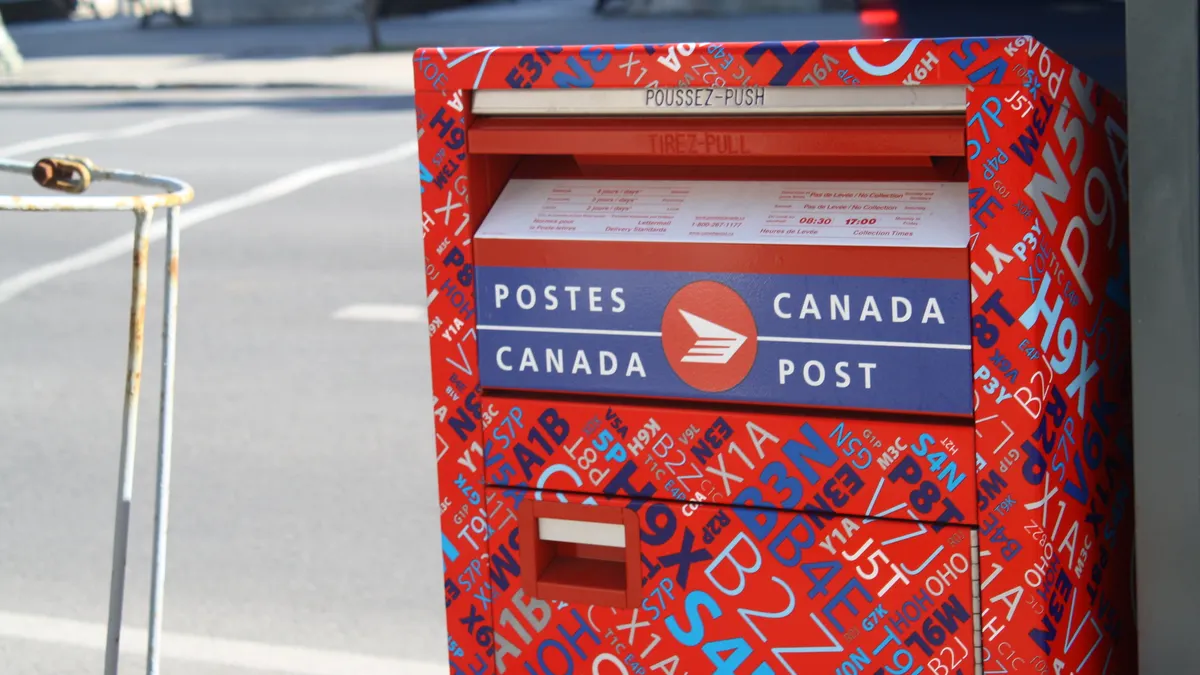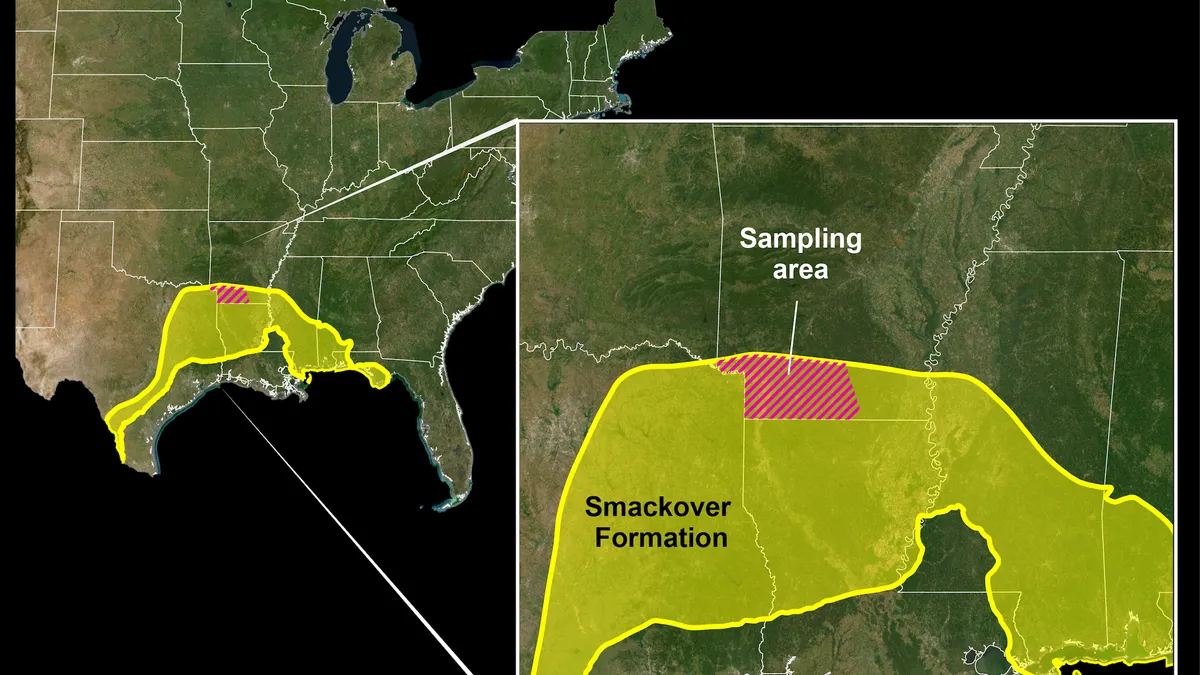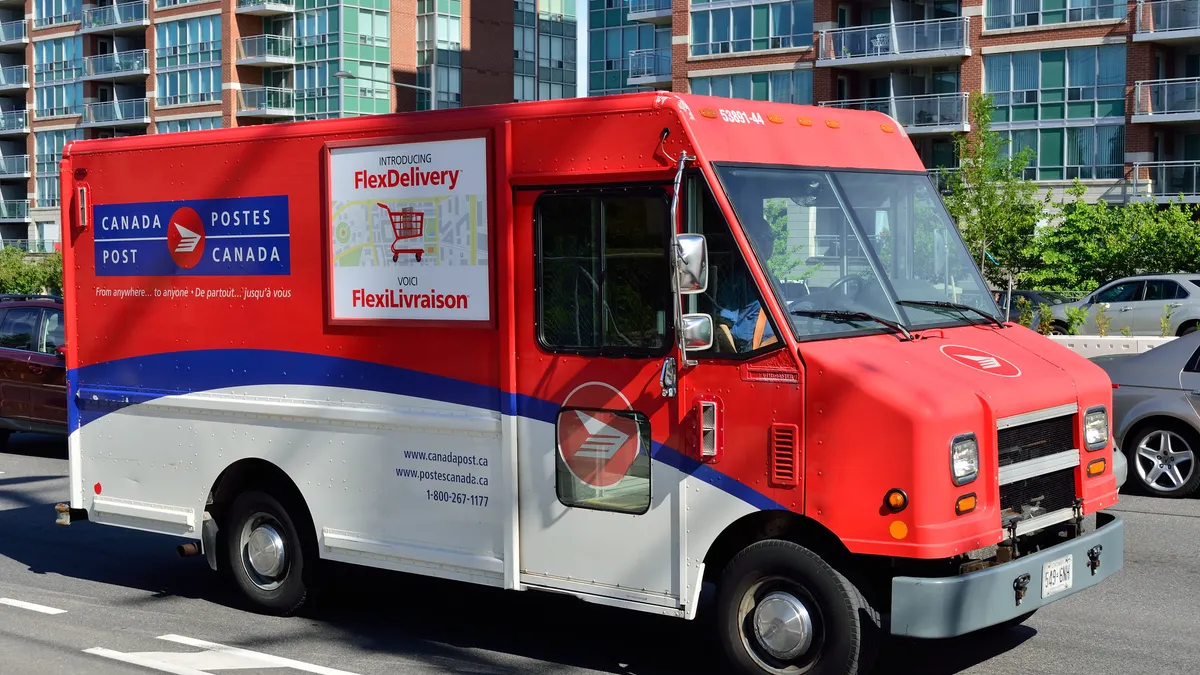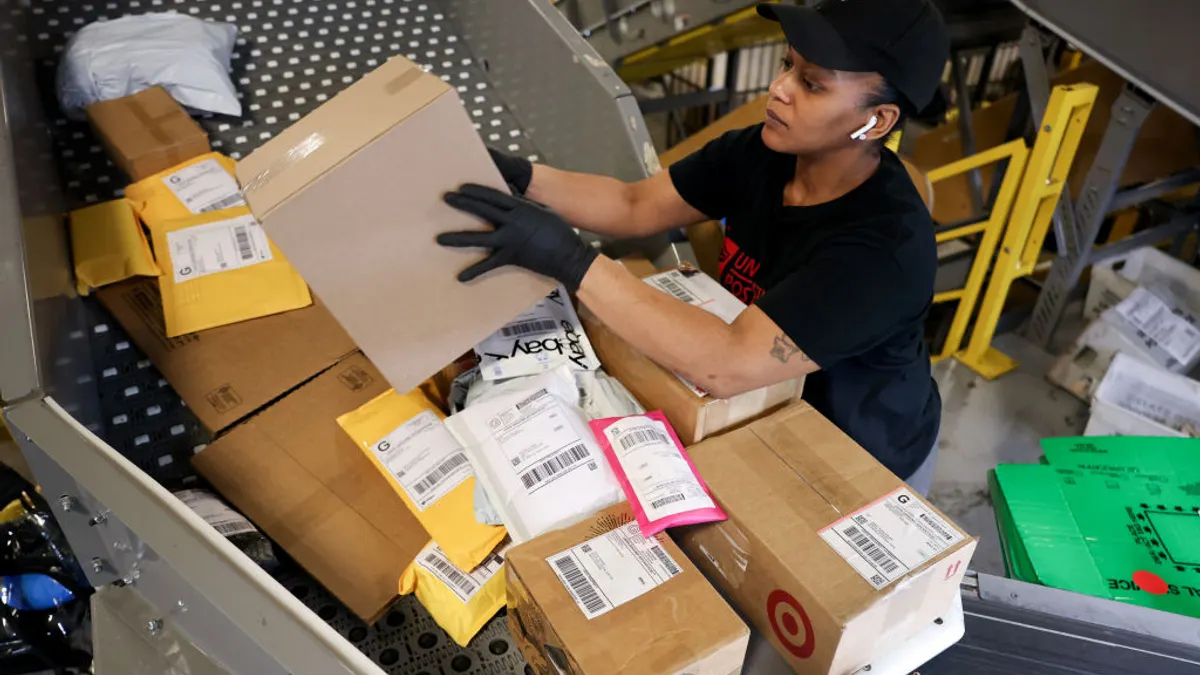Canada's parcel delivery sector is preparing for another potential strike at Canada Post, an event that could increase demand for other carriers and delay shipments across the country.
The government-owned carrier shut down in the thick of peak season last year due to an employees' strike, disrupting the flow of holiday deliveries. The work stoppage lasted just over a month before the Canada Industrial Relations Board stepped in, restarting operations on Dec. 17.
Another disruption could happen soon if the government-owned carrier and the Canadian Union of Postal Workers don't reach a new long-term contract by next month.
The current agreements between the two parties are set to expire on May 22. Canada Post said earlier this month that a labor disruption is possible on or after that date, adding that it will work closely with customers to prepare them for any potential impacts.
"This is not the message we hoped to be sharing at this time," Canada Post said on April 3. "But we recognize how important it is to give you the information you need to make business decisions."
Here are three pressing questions shippers should consider in planning to mitigate any disruption.
Where do contract negotiations currently stand?
Progress in contract negotiations has appeared to be limited so far this year, with both sides reporting a breakdown in talks in early March. A key sticking point in discussions is how weekend delivery will be handled.
Canada Post said it aims to create a new part-time workforce to make weekend deliveries, along with measures to better match staffing levels with fluctuating volumes. It argues that the changes are needed to help its delivery business fare better against the competition.
“This is not the message we hoped to be sharing at this time. But we recognize how important it is to give you the information you need to make business decisions."

Canada Post
April 3 statement on contract negotiations with the Canadian Union of Postal Workers
The Canadian Union of Postal Workers is against such measures, saying that the carrier should instead use full-time employees to staff its operations wherever possible.
"This managerial flexibility comes entirely at the expense of the worker, who must bear the cost of shifting consumer demand with unstable work hours," the union said in a March analysis on weekend staffing. "Such instability puts workers under strain."
An industrial inquiry commission, established by the government to examine Canada Post issues, will offer a report and recommendations on how to potentially resolve the ongoing contract disputes to Canada's Minister of Labour by May 15. Although that's a week before the strike could occur, experts have expressed doubt that the two sides will secure a deal and avoid a strike prior to the deadline.
"The potential of [a] strike, for which would be the soonest would be May 22, is highly likely," said Alison Layfield, director of product development at ePost Global. "So many of us in the industry are already preparing for this."
How would a strike disrupt deliveries?
Canada Post is usually the top option for direct-to-consumer shippers because of its country-wide coverage and lack of residential surcharges, according to Imtiaz Kermali, VP of sales and marketing at eShipper. The carrier is also a key resource for other delivery providers, with many handing off packages to the carrier for parcels destined for rural addresses.
Without access to those capabilities, various Canada Post shippers scrambled to hand volume to alternative carriers during last year’s peak season. Carriers imposed a mix of restrictions to help manage the influx of packages entering their networks, from service pauses to pickup and drop-off volume caps.
However, if a late May strike occurs, it would likely be less disruptive than the previous work stoppage, experts said. E-commerce sales and shipping volumes are soft at the moment amid tariff-driven uncertainty, resulting in healthy levels of capacity, according to Maggie Barnett, CEO of LVK Logistics, a fulfillment provider in Canada and the U.S.
"There's still going to be disruptions. But instead of seven- or eight-day delays, we would see three- to four-day delays on some of these items, with potentially longer times for pickups from the fulfillment centers," Barnett said.
Other parcel carriers in Canada told Supply Chain Dive in emailed statements their networks are prepared for any disruptions that could occur due to a strike.
FedEx said it has a plan in place to maintain reliable service for its customers even if demand increases. Purolator, another delivery provider, is incorporating lessons learned from the last Canada Post strike into its contingency plans, saying it will make sure service is strong for existing customers. Neither carrier provided additional details about what their contingency plans entail.
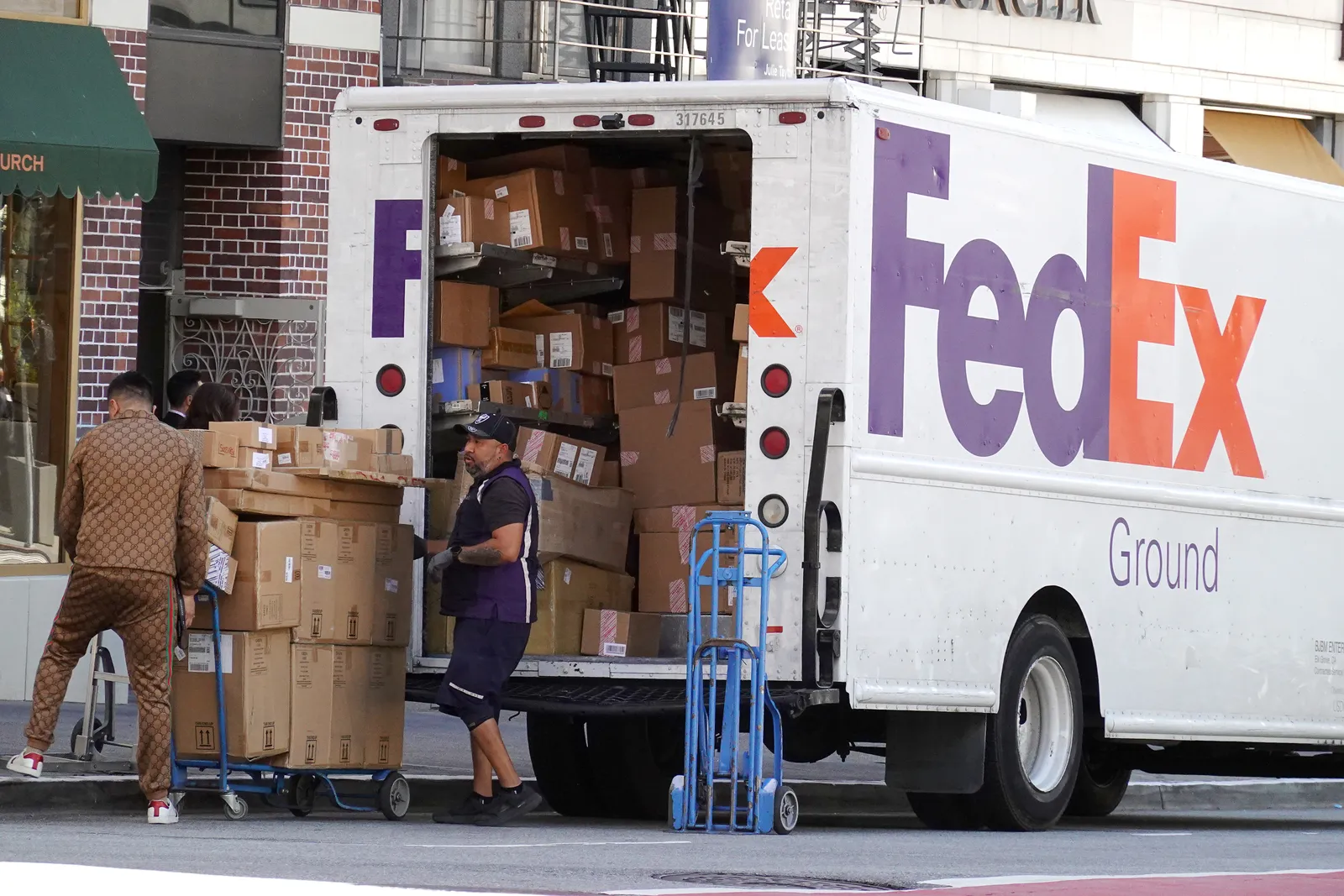
Although FedEx and Purolator said they are prepared, that doesn't mean they will open their doors to every shipper looking for a temporary solution during the strike, according to Kermali. Preparing a network for a volume surge is resource-intensive and can risk disgruntling major customers if service is compromised to make room for more packages, he added.
"Carriers want to avoid that, because then their premium customers that they treat are also affected by a small, quick surge of business that comes in and goes out," eShipper’s Kermali said. "So businesses need to prepare to ensure that they have a network readiness plan."
What should shippers do to prepare?
Shippers need to have alternatives ready if a strike occurs, be it through direct carrier arrangements or third-party services connecting them to other delivery options, experts said.
They should also consider how using other carriers could impact their shipping costs or delivery coverage. Shippers sending items through letter mail or to rural addresses might see especially high price increases during the transition, Barnett said.
Transparent customer communication about potential delivery disruptions — and options for them to avoid delays — is another important facet of contingency planning.
For example, if a company uses Canada Post for standard delivery and private carriers for expedited shipping, it could recommend the expedited option to ensure customers get their orders on time, ePost Global's Layfield said. She added that businesses could ask customers using a PO box to share an alternative address to avoid any strike disruptions.
"There doesn't necessarily have to be an interruption or delay in their package delivery if, say those customers with a PO box can provide a physical street address instead of that PO box," Layfield said.



